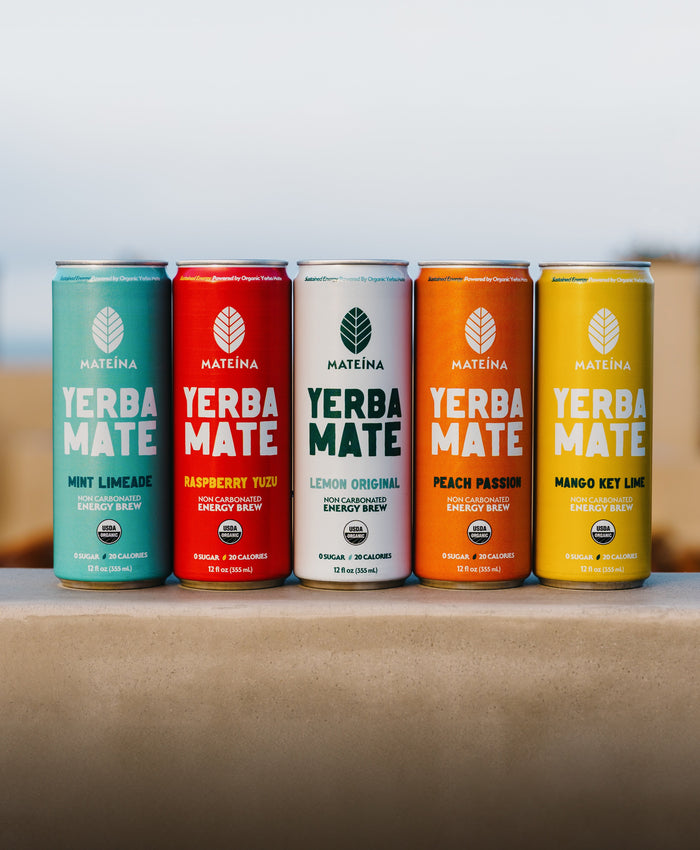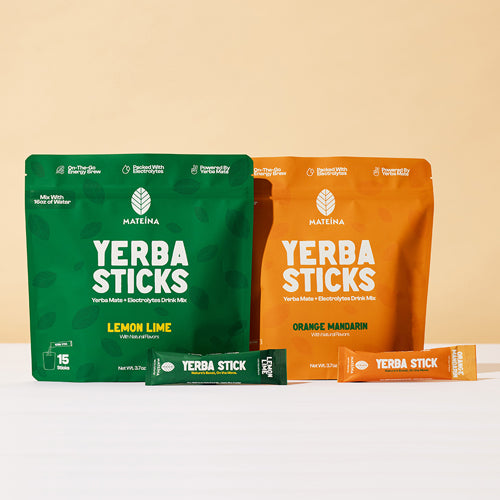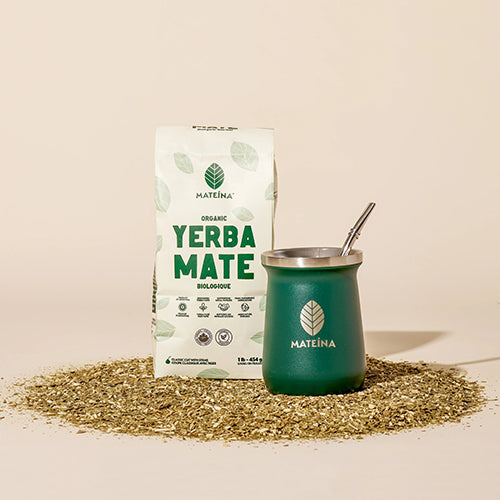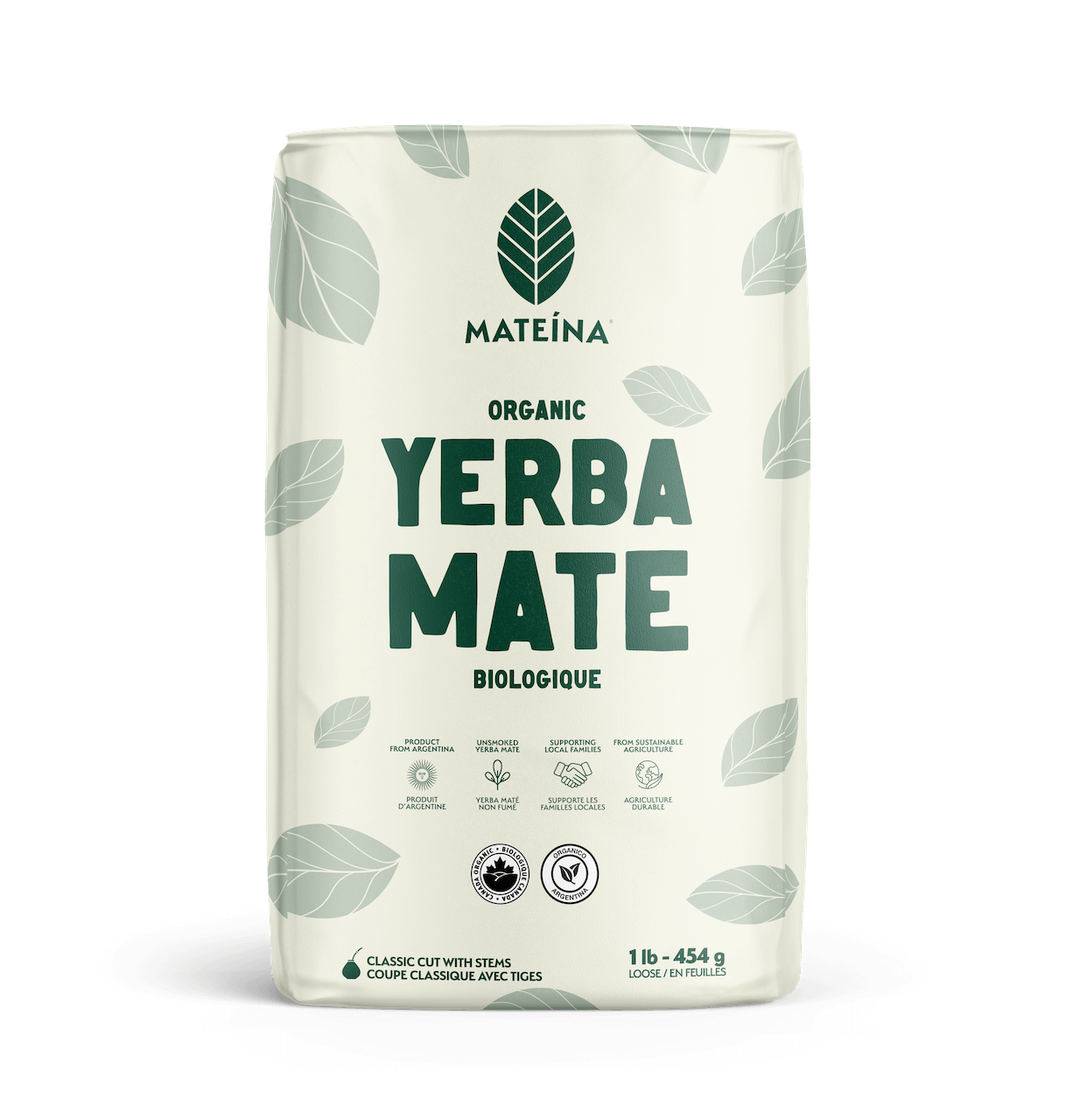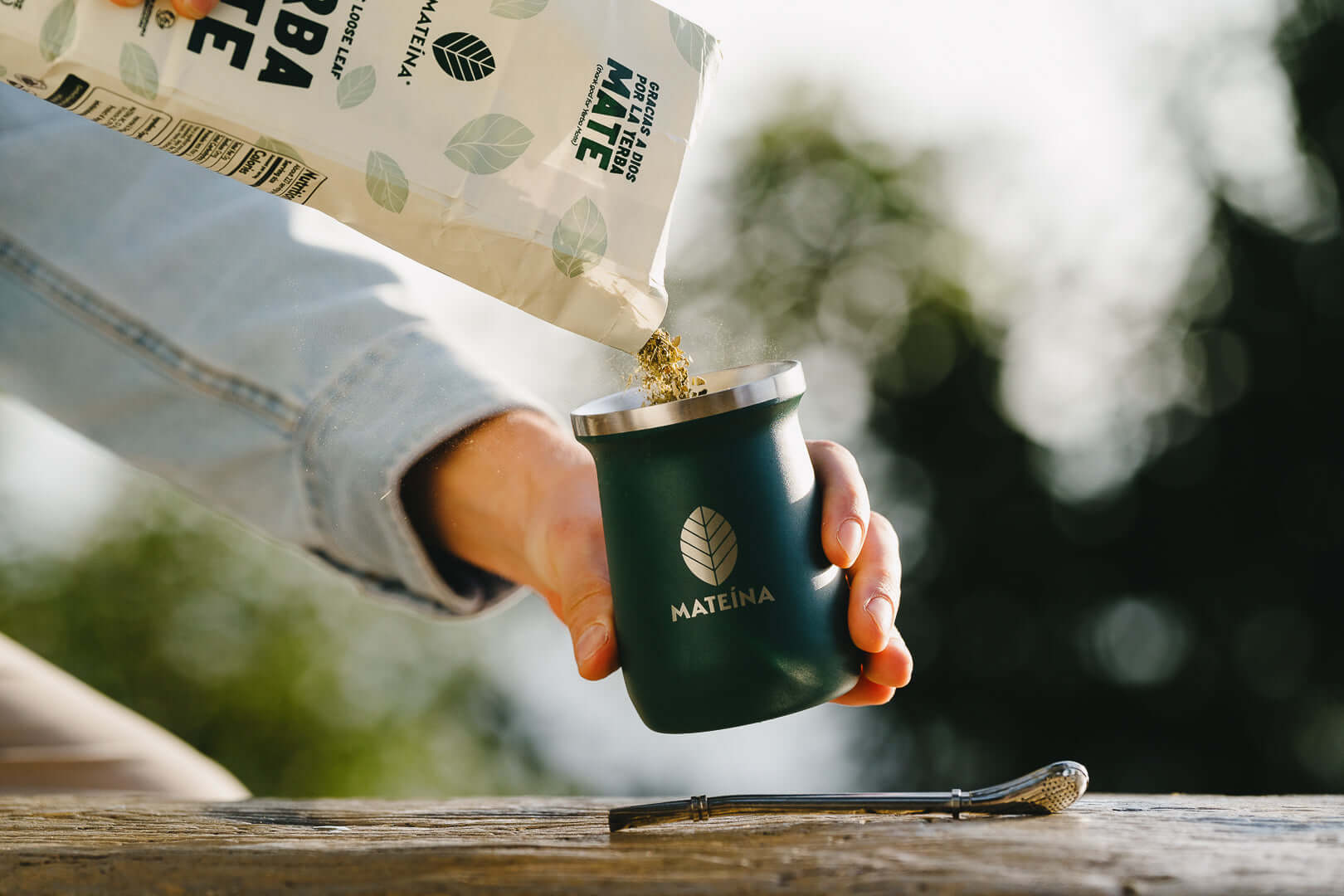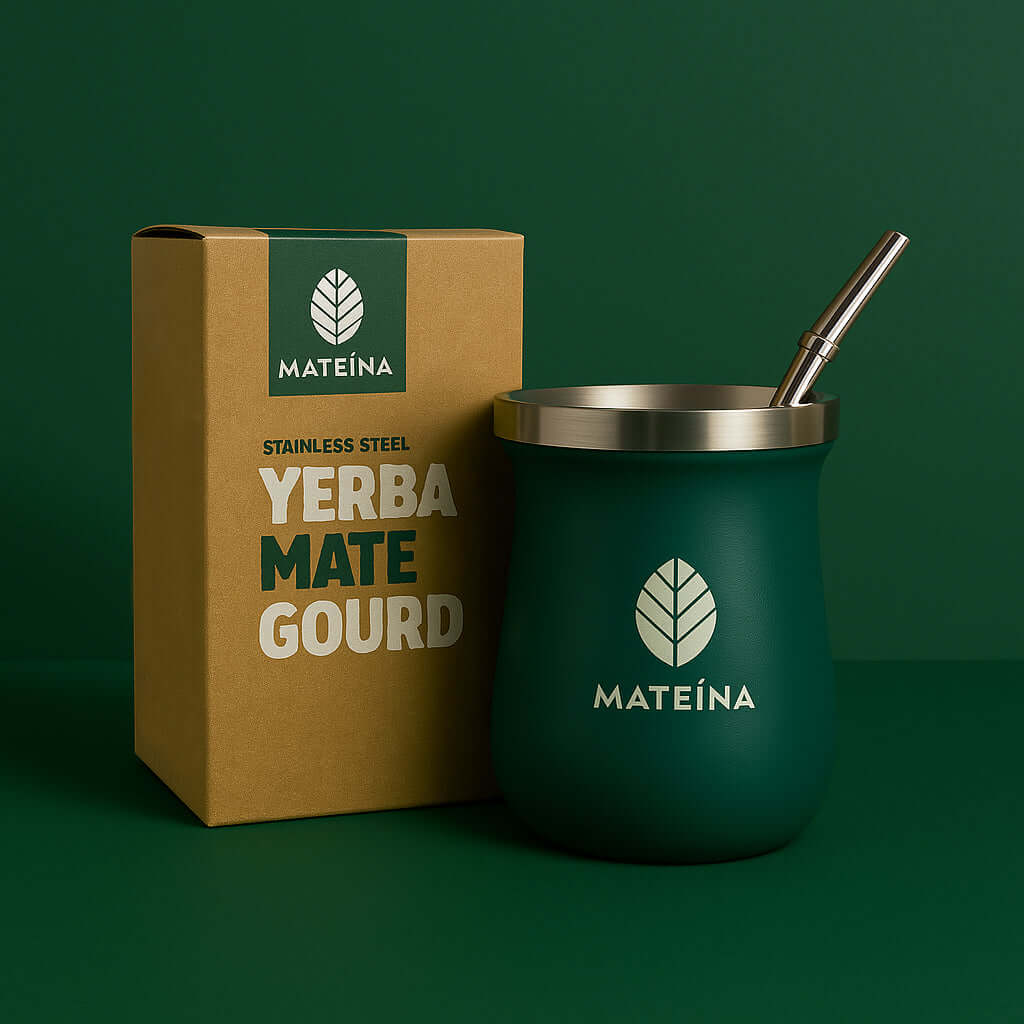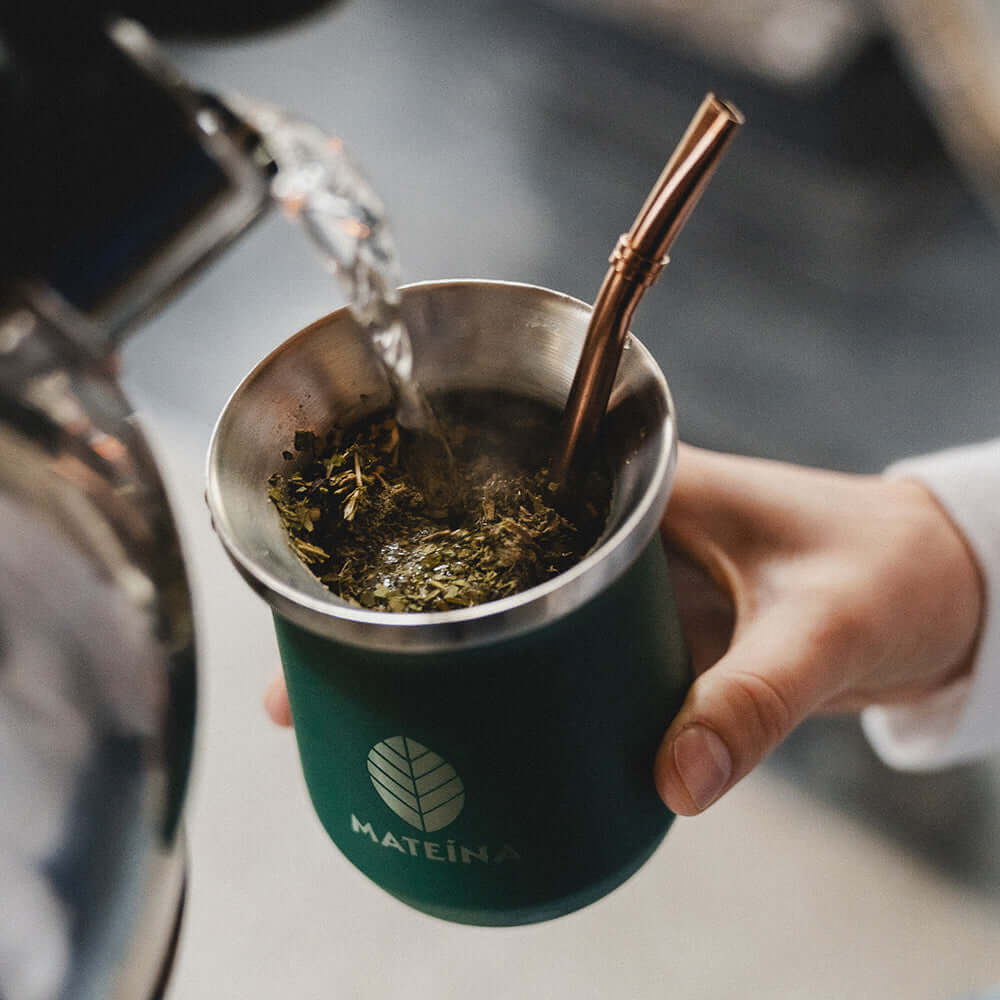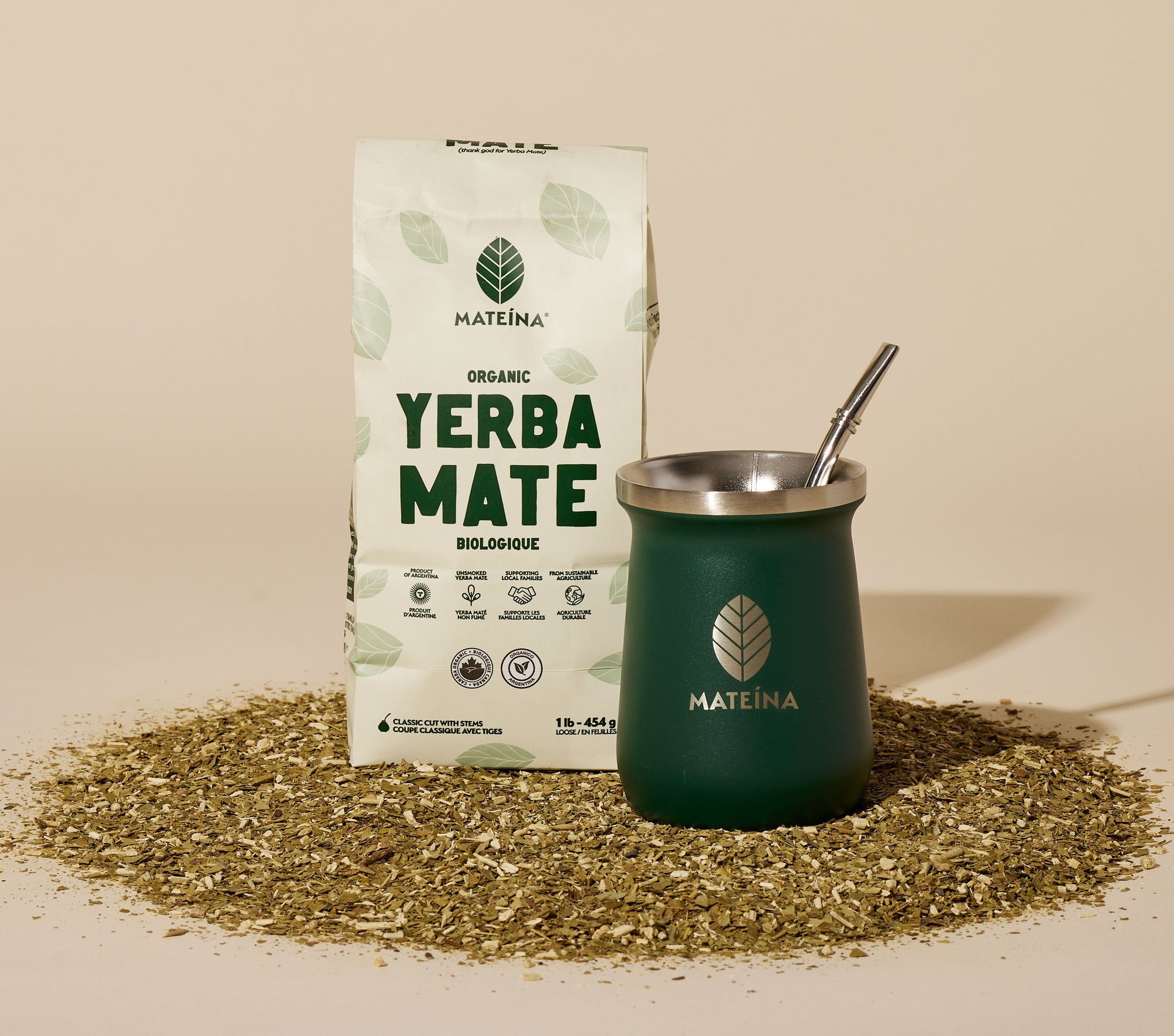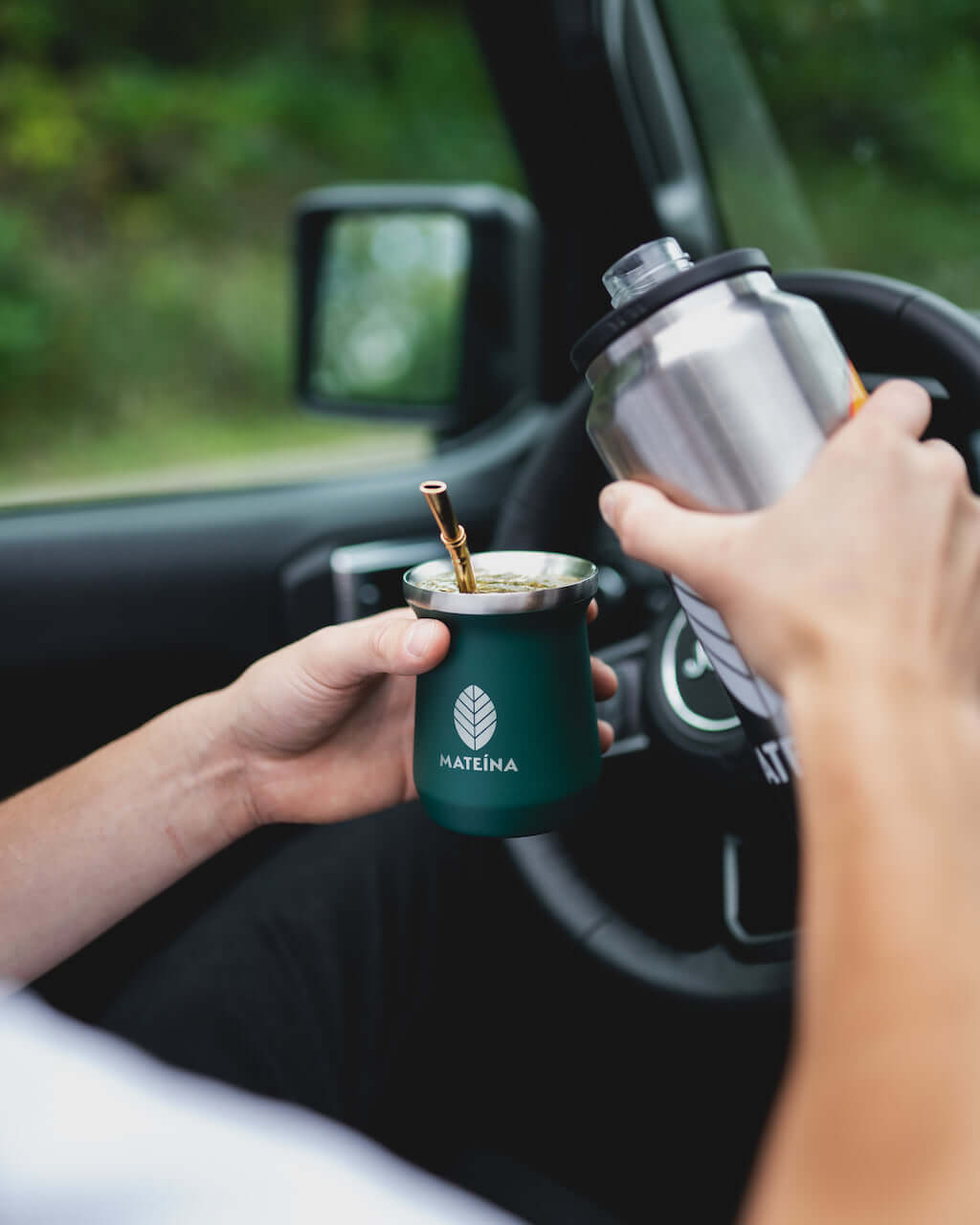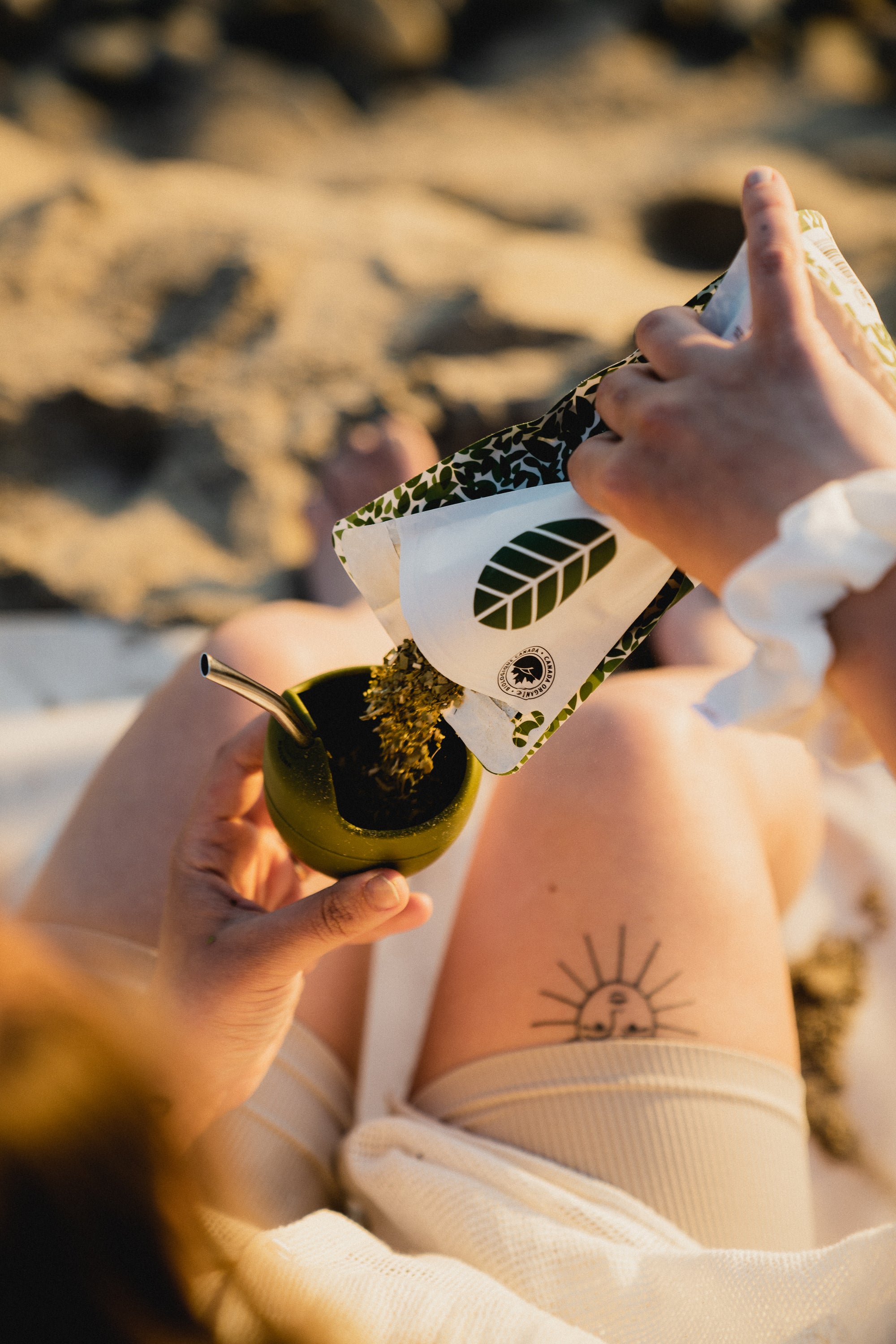
· By Josiane Racette
Mate vs. Tea: The essential differences explained
One frequently asked question is whether Mate is tea. Although both beverages share similarities as infused drinks, they have essential differences. To clarify this common question, let's examine the distinctions between Mate and Tea.
Origin
- Mate: Is a traditional South American beverage, notably in Argentina, Paraguay, and Uruguay.
- Tea: Originates from China but is cultivated in many regions worldwide, including India, Japan, and Sri Lanka.
Plants used
- Mate: Is made from the leaves of the Yerba Mate plant (Ilex paraguariensis).
- Tea: Comes from the leaves of the Camellia sinensis plant. However, there are different varieties of tea (black tea, green tea, oolong tea, white tea) depending on the processing of the leaves.
Preparation process
- Mate: Is traditionally prepared by placing Yerba Mate leaves in a gourd and infusing them with hot water. It is then consumed using a metal straw called a "bombilla" and requires no steeping time (unless consumed iced). To maximize benefits, it's essential to avoid prolonged contact between hot water and the leaves.
- Tea: Is prepared by infusing tea leaves in hot water. Infusion times and temperatures vary depending on the type of tea. Achieve maximum benefits with the right infusion time, tailored to your tea type.
Nutritional profile
- Mate: Rich in antioxidants, including polyphenols, yerba mate also contains specific compounds such as saponins, xanthines, and flavonoid polyphenols. It provides a variety of vitamins (A, B1, B2, B3, B5, B6, C, E) and minerals such as calcium, manganese, iron, potassium, phosphorus, and zinc, along with essential amino acids.
- Tea: A natural source of antioxidants like catechins, aids in neutralizing free radicals in the body. It contains vitamins (notably C), potassium, magnesium, and zinc.
Caffeine content
- Mate: Yerba mate contains caffeine, and the quantity may vary. Generally, it has lower caffeine content than coffee but more than certain teas. The distinct strength and characteristic of mate stem from its unique impact, attributed to the interplay of caffeine and theobromine.
- Tea: Caffeine levels in tea vary based on the tea type and steeping duration. Generally, a cup of tea has lower caffeine content compared to a cup of coffee, with green tea containing less caffeine than black tea.
Flavors and taste profiles
- Mate: Has an earthy, herbaceous, and often slightly bitter flavor. It offers a unique and robust taste. Indulge in the raw authenticity of Yerba Mate: experience pure, unfiltered awesomeness in every sip!
- Tea: Spans a broad spectrum of flavors, from sweet to floral, with taste profiles varying extensively based on the type.
Essentially, Yerba Mate and Tea, despite both being infused beverages, originate from different plants, undergo distinct preparation methods, feature diverse nutritional profiles and caffeine content, and showcase individual flavors. Yerba mate, a traditional South American drink, contrasts with tea, which comes from the Camellia sinensis plant and enjoys widespread global popularity.
Recognizing these distinctions is vital for a thorough appreciation of each unique beverage experience🍃
